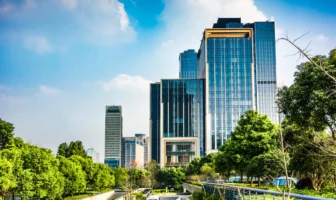
Precast concrete was used in construction as early as Ancient Roman times, but in the past few years, it has enjoyed a major resurgence thanks to the many advantages it offers compared to traditional construction. Precast concrete has innovated the landscape by compressing project timelines and creating a safer environment not only for construction workers but for the people residing within its walls. For contractors and architects, it’s important to gain an understanding of this rising trend so they can adjust their business model in response.
Reduced costs
If you check www.jpconcrete.co.uk for their full precast concrete line, you’ll find the costs are cheaper than onsite construction. This is because precast concrete is manufactured off-site and only delivered to the construction site for installation. This means that on-site work is minimized, lowering labor costs.
The manufacturing process of precast concrete is also carefully controlled by robotics and artificial intelligence. This technology can calculate the exact amounts of raw material necessary to consistently produce the best quality panels, which optimizes resources.
Increased resistance
Buildings made from precast concrete demonstrate better resistance to wind, rain, fires, explosions, termites, and earthquakes, among others. They are also able to endure freeze-thaw cycles better than other construction materials. This superior resistance drives down maintenance and insurance costs and provides peace of mind and safety to the residents living inside.
Design versatility
Precast concrete can take on almost any shape, size, color, or finish. With precast concrete, even the smallest and most complex details can be incorporated into the finished product. This opens the possibility of more innovative and avant-garde architectural structures. There were a lot of risks associated with being too ambitious with structural designs, but now that the individual parts of the structure can be precast in a safe manner and simply installed on-site, the sky truly is the limit for construction.
Low-impact and efficient construction
The biggest issue that traditional construction faces are how disruptive the practice is to the surrounding area. Dust and noise pollution are serious problems for citizens and workers. However, precast concrete significantly reduces on-site work, thereby reducing pollution and community disturbance. You can consult industrial noise control specialists here to address noise issues in your site. Traditional construction also suffers from errors at multiple points in the project due to tasks occurring simultaneously to meet deadlines. By using precast concrete, the project timeline is much faster, and the steps happen sequentially.
More environmentally friendly
Green construction is a practice many contractors are abiding by in response to the ongoing climate crisis. Precast concrete lends itself well to this pursuit. Its good thermal properties reduce energy consumption in the building. The optimization of the manufacturing process of precast concrete also means less waste. Precast concrete is also 100% recyclable. When the building is demolished, the remains can be used either in the construction of another building or road.
Construction continues to evolve, pushing the limits of what we thought we were capable of. Now that you know what makes precast concrete so popular, consider adopting it into your business practices to get ahead of the competition.
Read Also:




























